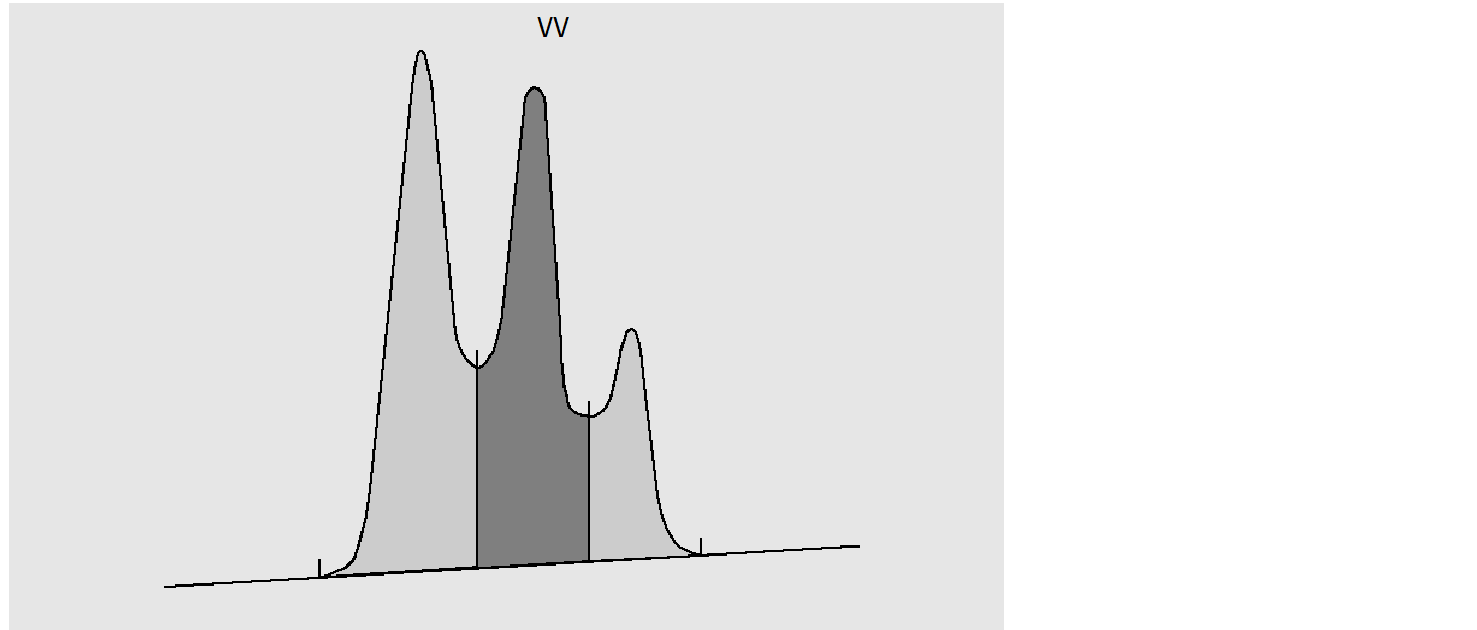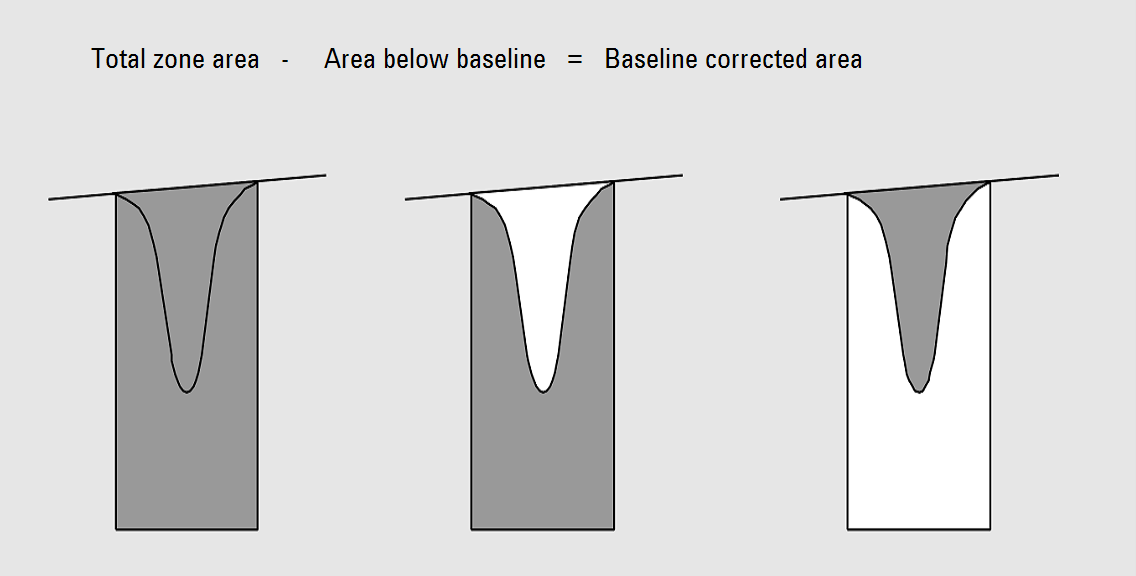Determination of the area
The area that the integrator calculates during integration is determined as follows:
-
for baseline-to-baseline (BB) peaks, the area above the baseline between the peak start and peak end, as in Area measurement for Baseline-to-Baseline Peaks,
for valley-to-valley (VV) peaks, the area above the baseline, segmented with vertical dropped lines from the valley points, as in Area Measurement for Valley-to-Valley Peaks,
-
for tangent (T) peaks, the area above the reset baseline,
for solvent (S) peaks, the area above the horizontal extension from the last-found baseline point and below the reset baseline given to tangent (T) peaks. A solvent peak may rise too slowly to be recognized, or there may be a group of peaks well into the run which you feel should be treated as a solvent with a set of riders. This usually involves a merged group of peaks where the first one is far larger than the rest. The simple drop-line treatment would exaggerate the later peaks because they are actually sitting on the tail of the first one. By forcing the first peak to be recognized as a solvent, the rest of the group is skimmed off the tail,
negative peaks that occur below the baseline have a positive area, as shown in Area Measurement for Negative Peaks.

